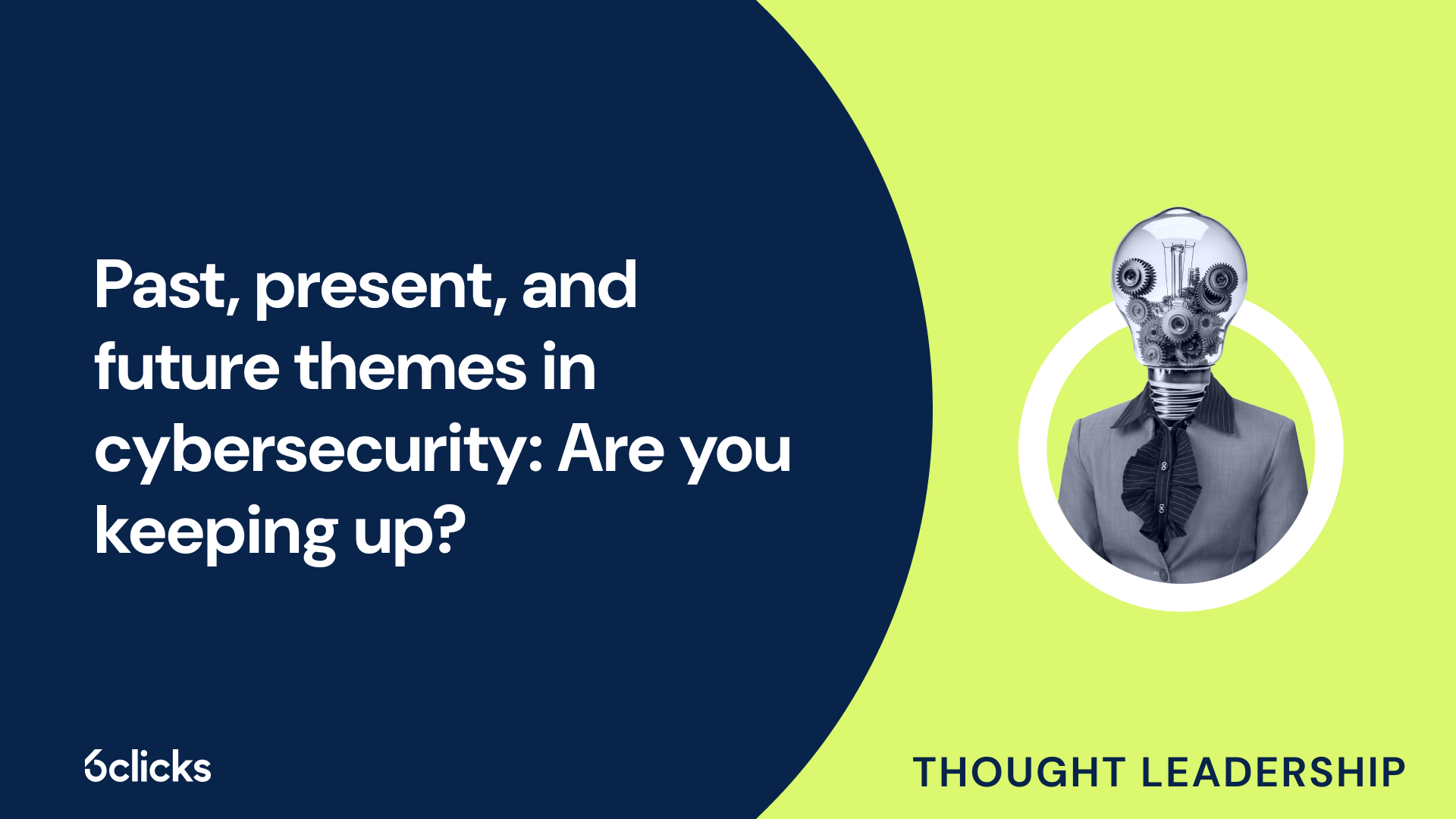In the ever-evolving landscape of cybersecurity, understanding where we've been, where we are, and where we're going is essential. By examining the shifts across key cybersecurity themes—threats, vulnerabilities, Governance, Risk, and Compliance (GRC), solutions, the role of CISOs, and building trust—we can better anticipate challenges and strategically adapt for the future. This conceptual model offers a framework for thinking about the past, present, and future in each of these areas.
Threats
From curiosity-driven activities to potential militarization
In the early days of cyber threats, attackers were often curious individuals driven by exploration and a desire to test boundaries. Their motivations were less about causing harm or stealing data and more about challenging themselves and understanding technology. While damaging, these threats were typically less sophisticated.
Today, the threat landscape is dominated by well-organized, well-funded groups, including state-backed intelligence services and organized crime groups. These actors bring significant resources, with motivations ranging from espionage and political interference to financial gain. Modern cyber threats are highly strategic, targeting critical infrastructure, intellectual property, and sensitive data.
Looking ahead, cybersecurity experts anticipate a growing militarization of cyberspace, with state-level actors engaging in conflicts through digital warfare. The line between physical and cyber warfare may blur, as nations leverage cyber capabilities as part of broader defense and offense strategies. In this potential future, the exploitation of computer systems for espionage gives way to sabotage.
Vulnerabilities
From securing physical infrastructure to prioritizing information security
Initially, vulnerabilities centered around physical infrastructure—networks, servers, and hardware components like network firewalls. Securing systems often meant safeguarding physical spaces and protecting basic digital networks from external interference.
As software took center stage, vulnerabilities shifted to applications. Today, application-layer vulnerabilities are among the most targeted, with attackers exploiting weaknesses in software design, coding, and user behavior (aka phishing and social engineering). Application security has become a specialized field focused on securing data flows, APIs, and user interactions.
In the future, information security will again take priority. With data remaining the most valuable asset, the focus will once again be on protecting data including its integrity, privacy, and ethical use. Advanced threats may aim to manipulate or exploit information itself, making information resilience a key concern for cyber security.
GRC
From checkbox compliance to adaptive risk and compliance
In the past, cybersecurity governance was often a matter of checking boxes on a list of minimum requirements. Organizations complied with regulations and standards superficially, focusing more on regulatory needs than actual security. This approach was reactive and didn’t necessarily improve security posture.
Modern governance has moved to a risk-based approach, where compliance is informed by the unique risks facing an organization. This involves a deeper understanding of potential threats and aligning security efforts with business goals. Today, GRC programs are more strategic, aiming to balance security with agility.
Future compliance will be adaptive, with organizations continuously assessing and responding to risks in real time. The goal is a dynamic organizational model that evolves with changing threats, technologies, and business needs, ensuring that security is always aligned with the organization’s current risk profile.
Solutions
From hardware-oriented to advanced automation and supervision
Historically, cybersecurity solutions were heavily hardware-focused, relying on physical devices like firewalls and on-premise servers. Security depended largely on controlling access to physical devices and securing network perimeters.
Today, the focus has shifted to software and services. Cloud-based security tools, SaaS solutions, and managed security services offer flexibility, scalability, and often greater efficiency. These solutions allow organizations to defend against threats without heavy physical infrastructure.
Cybersecurity solutions in the future will leverage automation and advanced supervision, with AI-driven systems that autonomously detect, respond to, and even predict threats. Cybersecurity teams will focus more on overseeing these intelligent systems and ensuring they operate within ethical and effective guidelines.
CISOs
From being disablers to becoming leaders and innovators
Back then, Chief Information Security Officers (CISOs) were often viewed as “disablers”—professionals tasked with saying “no” to protect the organization. They were seen as roadblocks to innovation, with security being regarded as a necessary but inconvenient expense.
Today, CISOs are increasingly seen as advisors and enablers, helping organizations balance security with business objectives. Modern CISOs are trusted partners in strategic planning, enabling growth by providing secure frameworks that allow for innovation while mitigating risks.
In the future, CISOs will be leaders and innovators, driving digital transformation and resilience strategies within organizations. They’ll play a proactive role, not just in security but in business innovation, leveraging security as a competitive advantage and fostering a culture of cyber resilience.
Building trust
From self-assessments to continuous transparency
Trust-building in the past often relied on self-assessments, where organizations conducted internal reviews to evaluate their cybersecurity posture. These were typically informal and might not provide an objective view of security performance.
Today, building trust requires more rigorous third-party assessments. Annual independent audits are a standard part of cybersecurity assurance, offering external validation of security measures. These audits help demonstrate transparency and accountability to stakeholders.
Soon, trust will be built through continuous transparency, with real-time insights into security practices and ongoing assurance. Organizations will adopt technologies that provide constant visibility into their security health, fostering trust and confidence through an open and proactive approach to cybersecurity.
Conclusion: Trust, resilience, and innovation as pillars of the future of cybersecurity
The journey of cybersecurity from the past, through the present, and into the future reveals a remarkable transformation. As threats grow more sophisticated, vulnerabilities become more complex, and expectations around governance and transparency rise, organizations must adapt swiftly. The future of cybersecurity will depend on dynamic, intelligent systems, and visionary leaders who can guide organizations through new challenges. Understanding these themes helps us prepare for what's ahead, turning cybersecurity from a defensive function into a strategic enabler of trust, resilience, and innovation.
Discover how 6clicks can help you prepare your organization for what lies ahead.
Written by Andrew Robinson
Andrew started his career in the startup world and went on to perform in cyber and information security advisory roles for the Australian Federal Government and several Victorian Government entities. Andrew has a Masters in Policing, Intelligence and Counter-Terrorism (PICT) specialising in Cyber Security and holds IRAP, ISO 27001 LA, CISSP, CISM and SCF certifications.











